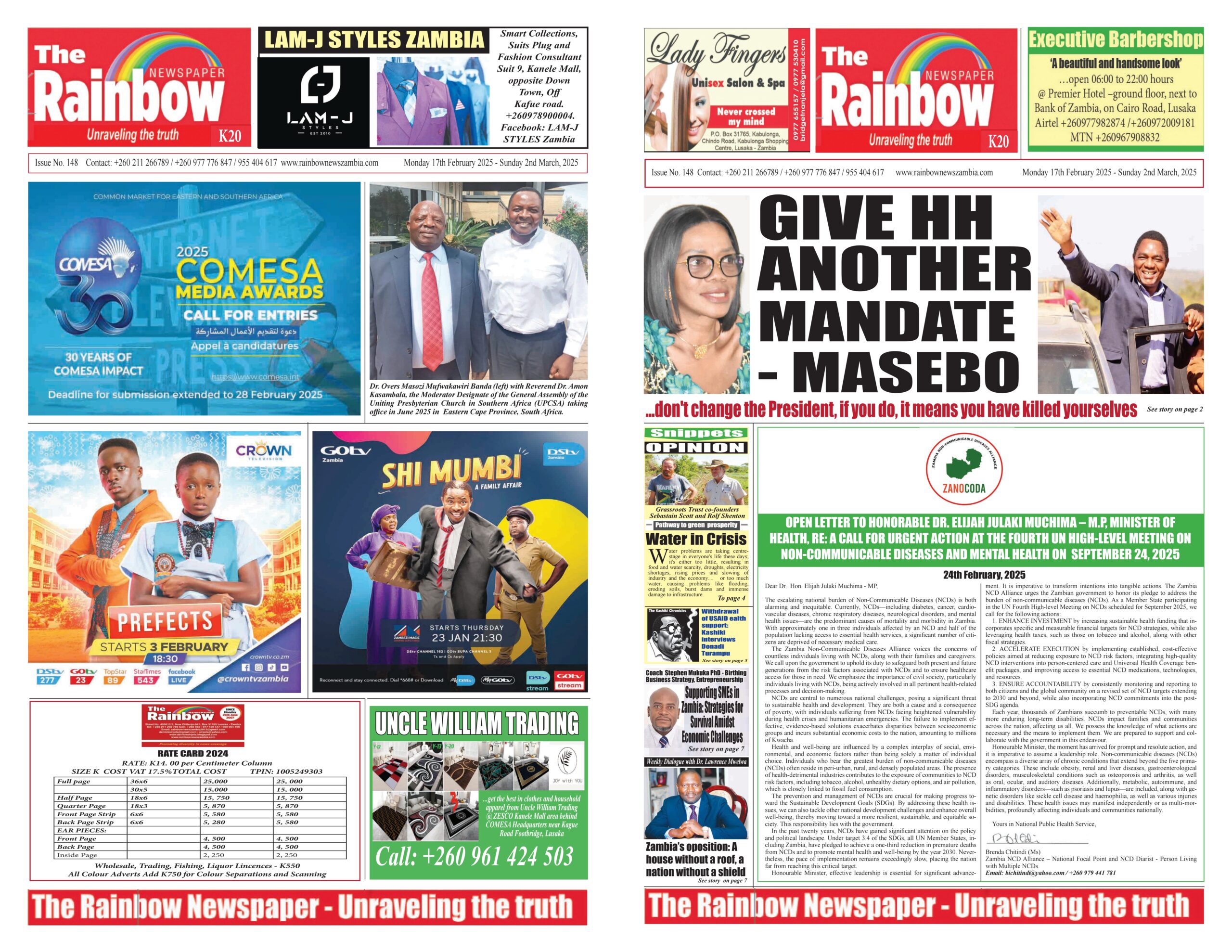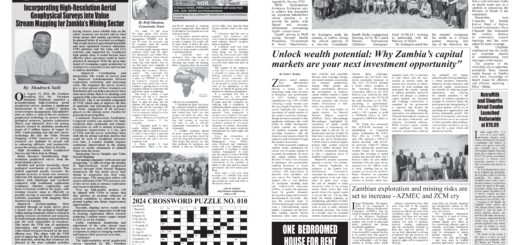ZANACO Exchange Rates Monthly Economic Report – March 2022
Notice: Undefined index: catFilterList in /home/zambi/public_html/wp-content/plugins/wp-likes/api.php on line 243

Mukwandi Chibesakunda

Mukwandi Chibesakunda
After picking up in February, growth in global economic activity eased during the month of March 2022 with the J.P Morgan composite PMI shedding 0.8 points to a 2-month low of 52.7 in show of the negative effects of the Russo-Ukrainian war.
The war hit both domestic and export demand with the latter contracting at a 20-month high rate. Slowing demand notwithstanding, inflationary pressure continued to escalate while outstanding business orders accumulated at a quicker rate and thus forcing firms to enhance the pace of hiring labour.
In view of the Russo-Ukrainian war occasioning a surge in commodity prices, hampering trade flows, and quickening the tightening of financing conditions, the IMF and the World Bank are warning of a steeper slowdown in global growth at the time that China continues to struggle with escalating Covid-19 cases.
Earlier in January, the Fund and the Bank downgraded their 2022 global growth forecasts by 50 bps and 20 bps to 4.4% and 4.1% from 4.9% and 4.3%, respectively, amid a flare-up in Covid-19 cases under the Omicron variant, rising inflationary pressures as well as unwinding policy support in advanced economies.
In tracing the out-turn in the global economy, economic conditions in Zambia’s private sector deteriorated in the month of March 2022 coming from a marginal improvement in February.
This was manifested by a 1.4-point dive in the economy’s PMI reading to an 8-month low of 49.6 from 50.3 and thus implying that economic conditions deteriorated at the deepest rate since last July.
Rising input costs and a fall in demand for the first time in 8 months were behind the deterioration in business conditions at the end of Q1 2022.
In line with our earlier forecast of 3.6% for 2021, preliminary data from ZamStats show that Zambia’s economy grew 3.6% in 2021 in a fashion that showed a strong rebound from a 3% contraction recorded in 2020. At sector level, arts/entertainment/recreation, ICT, electricity, and construction were rebound leaders.
However, GDP for the mining/quarrying, agriculture, education and professional services shrunk.
As regards the growth outlook, we continue seeing the Zambian economy recording a 3.8% growth (20 bps stronger than the feat in 2021) in 2022 before strengthening further to 4.4% in 2023.
These forecasts rest on improving fiscal space, which is already enabling higher fiscal spending, lower input costs, higher copper prices, sustained household income growth, moderating interest rates and effects of positive sentiments on the local currency.
However, the Russo-Ukrainian war has intensified downside risks after occasioning an increase in energy as well as fertilizer costs.
In continued base effect impact, relatively stronger currency and lagged effects of stable feed prices, Zambia’s annual inflation for March 2022 decelerated quicker by 110 bps (vs 90 bps in February) to a 26-month low of 13.1% from 14.2% during the preceding month.
Both food and non-food inflation slowed down by 70 bps (vs 90 bps in February) and 150 bps (quickest in 6 months) to 15.3% (17-month low) and 10.3% (26-month low).
Going forward, and in defiance of the recent hike in fuel pump prices, our forecasts point to continued climb down in annual inflation with rates for April and May seen at 12.7% and 12.3%, respectively.
Money market liquidity tightened 6.3% in March 2022 to ZMW 3.4 billion as liquidity withdrawals via FX sales by BoZ, OMO purchases, taxes and TB/Bond cost settlements outpaced liquidity injections via government spending and maturities.
In view of tightening liquidity conditions, the O/N interbank rate rose 8 bps to 8.92% from 8.84%.
However, the retail deposit rates were mixed as the 30-,60-, and 180-day tenors experienced a decline while the 90-day tenor rose whereas those on 7- and 14-day buckets remained flat.
TBs continued to attract investors as the two auctions held during March 2022 where oversubscribed but the quantum reduced. Specifically, the subscription rate dropped to 139.1% in March 2022 from 179.6% recorded in February 2022.
On the contrary, investor chase for bonds retreated significantly as the auction was undersubscribed at 76.9% from the February’s subscription rate of 119.5%. For TBs, the yield curve experienced a bull flattening twist whereas the bond yield curve remained static.
For the 2nd month in a row, total outstanding credit by commercial banks contracted 0.34% in February 2022 after shrinking by 1.82% in January.
This came after net-lending to government declined as the quantum of maturities outstripped the value of money raised via auctions held in February 2022.
Our outlook still suggests the credit will grow in 2022 and beyond despite being sluggish at the moment. We believe the push factors include recovering economy, subsiding inflation as well as improving credit risk environment.
Despite rebounding exports, Zambia’s trade surplus for the month of February 2022 narrowed 8.2% to a 4-month low of ZMW 5.99 billion from January’s ZMW 6.52 billion.
For the first time in 3 months, exports were up 2.6% (or ZMW 0.44 billion) to a 2-month high of ZMW 17.12 billion but a more than twice-as-much (ZMW 0.98 million) rebound in imports to a 3-month high of ZMW 11.23 billion meant that the country’s trade surplus narrowed with the steepest rate in the current 3-month constriction run.

Mukwandi Walusiku Chibesakunda is married Married to Chita Chibesakunda with four children Chushi, Lombe, Liswani and Kwane -Picture by Zambia Daily Mail
The Zambia Kwacha traded moderately stronger during the month of March amid a continued improvement in supply flows.
At a monthly average of ZMW 17.94 per US dollar on the interbank, the local currency was 0.9% stronger compared to an average rate of ZMW 18.10/$ for the month of February.
Majority of March’s appreciation came from the 2nd and 3rd weeks of the month during when the Kwacha strengthened nearly 3% to ZMW 17.71/$ on March 22 from the month’s low of ZMW 18.24/$ on March 10.
Looking ahead, the outlook suggests a stable Kwacha hovering in the region of ZMW 17.2-18.03/$.
The Bank of Zambia (BoZ) holds its monetary policy committee meeting during the 2nd half of May 2022 at which we expect the central bank to hold interest rates steady.
Although a number of upside risks to inflation outlook have arisen, there are a number of reasons supporting muted monetary policy response.
First, inflation forecasts suggest it is trending south with a possibility of going back into the corridor by mid-2023. Secondly, the key upside risks to inflation going forward are supply side factor such as poor harvest and the oil shock which all can’t be sorted out by monetary policy. ZanacoTreasury Service Account




















